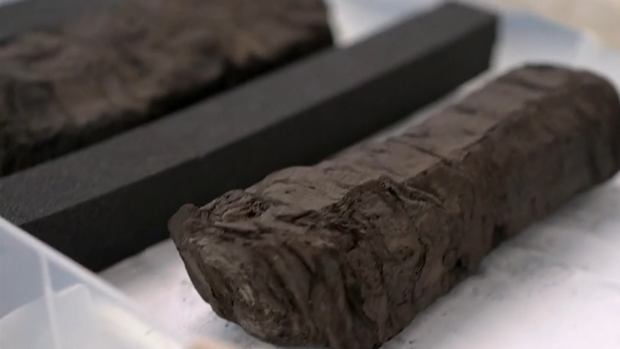Through destruction, the knowledge of thousands of years comes to the surface again. Artificial intelligence helps to resolve a mystery from the Roman Empire with papyrus from a library buried when Vesuvius exploded. Her secrets were buried but did not disappear.
The explosion of Vesuvius in 79 AD not only eliminated Pompeii, but also the nearby city of Herculaneum (today’s Erolano).
Deep down the surface, where there was previously a villa, 18th -century archaeologists found a treasure: 1,800 papyrus In the only ancient library in the world that is still preserved intact. Attempts to read some of the papyrus have come up with ashes, Brent Sils, a computer scientist from the University of Kentucky, explained to CBS.
“People didn’t understand what they had. Thus, some papyrus has been thrown or burned and you can’t re -accommodate from scratch » Siles mentioned.

But thanks to 21st century technology, experts are now able to consider those who are still intact.
This technology included a particle accelerator in Britain. Scientists produced light that was 10 billion times brighter than the sun, as a radius of X. Then artificial intelligence was used to recognize ink, no matter how dim it was.
“I thought, if you can use this technology to see non -invasively in a human body, why not We can see everything Inside an artifact like a papyrus? “ said Siles.
Decryption of papyrus
Of course, people needed to decipher what the letters mean. Thus, Siles started the Vesuvius Challenge, a global competition that offers a $ 700,000 prize ($ 598,000).
Three students easily won by writing history, being the first to read words from a charred papyrus, Nearly 2,000 years old, who has unfolded virtually.
With hundreds of more papyrus left, Siles launched a second phase of the competition.
“With methods inspired by the artificial intelligence they will bring, you know, new results we haven’t dreamed, I don’t think the word ” Renaissance ” is excessive, The opposite » emphasized.

Siles stressed that he believed that there could be more papyrus in Vesuvius, as archaeologists have only “scratched the surface” of archaeological discovery.
“I believe that the papyrus villa, which is not fully excavated, is very likely to produce more books,” he said. “Many are left to discover.”

Source :Skai
I am Frederick Tuttle, who works in 247 News Agency as an author and mostly cover entertainment news. I have worked in this industry for 10 years and have gained a lot of experience. I am a very hard worker and always strive to get the best out of my work. I am also very passionate about my work and always try to keep up with the latest news and trends.










